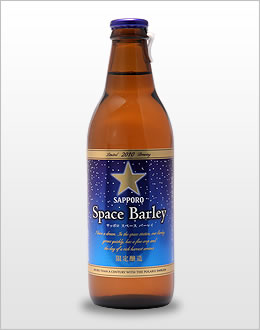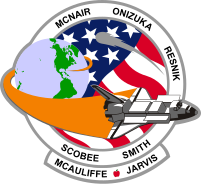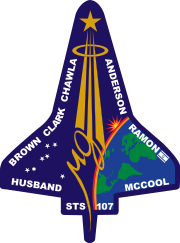Welcome to this week’s Carnival of Space
And, welcome to my humble blog. This week, my science-writer colleagues and I have multiple servings of tasty cosmic carnival fare for your delectation and intellectual curiosity. So, grab a brass ring, a refreshing beverage (more on that in a minute), and let’s get started down the space midway!
First into the center ring is Astropixie, with an a look at Determining Redshifts, a quick peek at how astronomers figure out just how far away things are in the universe. Amanda Bauer takes you step-by-step through the ways that astronomers determine distances in the cosmos.

Next, the folks at Cheap Astronomy from Canberra, Australia, weigh in with a pair of podcasts about alien biology The first talks about the role that water plays in the formation and sustenance of life. The second makes the case for carbon as the basis for life, particularly on our planet. If you’ve ever wondered about the chemical basis for life on Earth, these make a good introductory listen.
Parallel Spirals explores the publication of information about the recent Chandrayaan water discovery mission idea a bit more in Hubble Supports Chandrayaan Water Discovery. The formal science paper about how Hubble Space Telescope confirmed the presence of water on the Moon while looking at the LCROSS impact site will be published very soon.
Over at Steve’s Astro Corner, in On the Horizon What is the Next Big Thing? Steve Tilford brings you a look the technologies for exploration outlined in the Decadal Survey for Astronomy and Astrophysics. If it all gets built and funded, we’ll be studying everything from dark energy to the warm, dusty universe that will seen by the James Webb Space Telescope.
The future is also the subject of an essay called Population Limits of the earth and the solar system factoring in improved technology over at Next Big Future. It’s about how the modern issues of how much population Earth can support (reasonably) and the growth of technological power and knowledge. Can we put these two together to optimize our chances for the human population of space? Head over and find out!
Materials science and understanding the effect of vacuum and thermal friction on rotating particles may be very relevant to astronomers as they seek to understand cosmic nanoparticles such as interstellar dust and the optical spectra of rotating molecules. This is the subject of a short blog entry called Vacuum has friction from an effect similar to the casimir effect, also available at Next Big Future.

If the past is present, then it’s important that we understand the history of space exploration. At Vintage Space, you can read an historical flash from the past in an article called Landings, NASA, and the Soviet Space Program, that explores the Soviet methods of getting astronauts safely back to Earth.
This week’s flashy news story (that turned out to be all mainstream-media handwaving, smoke and mirrors) about a Jupiter-like planet in the outer recesses of our solar system is Weirdwarp’s subject of discussion in Jupiter-like Planet Lurking Just Outside our Solar System is Extremely Unlikely. Guest poster Andrei (from ZMEScience) is a more sane and rational look at what the stories REALLY should have been about.
Next Big Future also presents a reasoned look at the outer solar system planet story in Tyche Planet X is still just a theory. Find out about the scientific paper by two respected scientists who posit the reasons why some long-period comet trajectories seem to have their comets coming from the wrong direction. Here’s your chance to go “behind the scenes” of a story that the MSM didn’t quite get right.
Nancy Atkinson at Universe Today talks with astronomer and planet hunter Mike Brown about that hypothetical giant planet lurking at the edge of the solar system to get his take on Tyche in About That Giant Planet Possibly Hiding in the Outer Solar System.
This week’s OTHER flashy news story, which covers events closer to Earth, turned out to be quite fascinating. It was the news about the Stardust-NExT mission to Comet Tempel-1. I talk about the mission in a pair of back-to-back entries called Waiting for Tempel-1, written on “flyby night” and The Face of a Comet, posted the next day after some of the first images had been made public.

At the center of our solar system, the Sun just keeps pumping out energy. Over at Vega 0.0, Francisco Sevilla writes about how coronagraphs enable astronomers to study the outer structures of the Sun’s superhot atmosphere. (Note the page is in Spanish, but you can translate using Google toolbar.)
Note: due to a software glitch, Astroblog’s entry didn’t make it in by the time I posted this. So, here is Ian Musgrave’s entry called The Kepler Bonanza: Making Sense of over 1,200 Extrasolar Worlds. Enjoy!
Over at Science Backstage, Italian science blogger and physicist Gianluigi Filippelli gives us a little “scientific baseball card” with important stats about the Sun and how it works.

Finally, I mentioned a tasty beverage at the top of this entry. In that spirit, let’s raise a toast to National Geographic’s Breaking Orbit blog for its entry Space Beer Ready for Tasting. It’s about Australia’s 4 Pines Brewing Company and its human experiment involving tasting beer that is meant for drinking on commercial space flights. Find out why some beers you may like here on the ground wouldn’t be so great in space.
That’s it for this week’s Carnival of Space. As you can see, there are many and talented writers who blog each day about astronomy, space science, and all the topics related to these. If you like what you see, visit their blogs and let the authors know what you think!
Thanks for dropping by and keep looking up!




